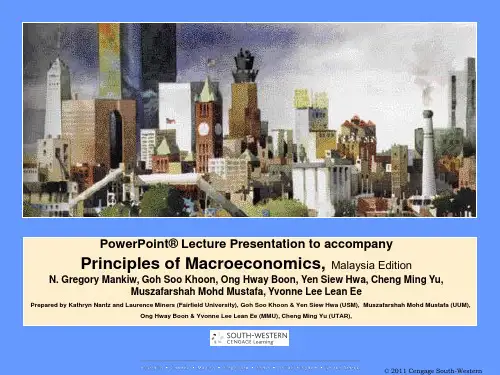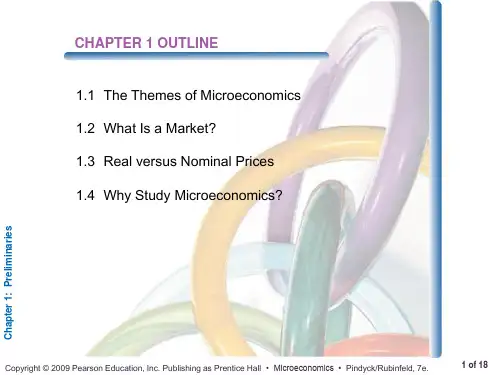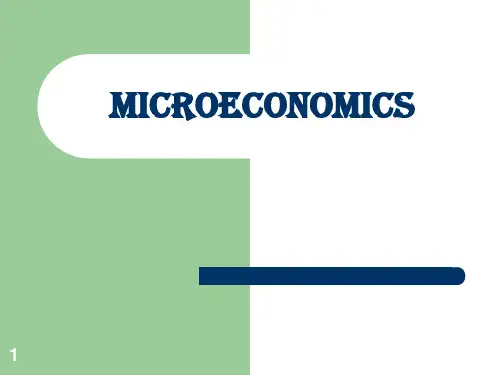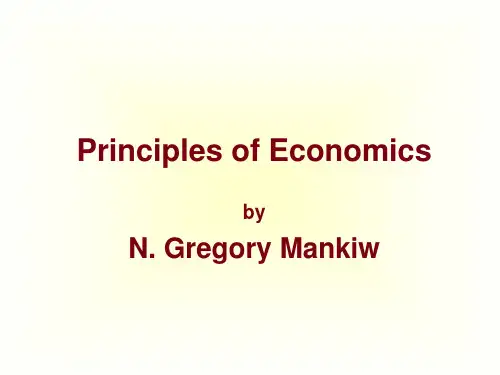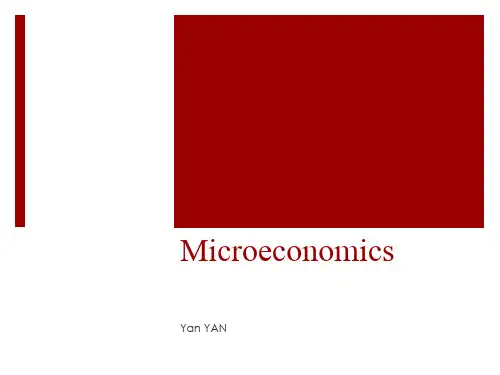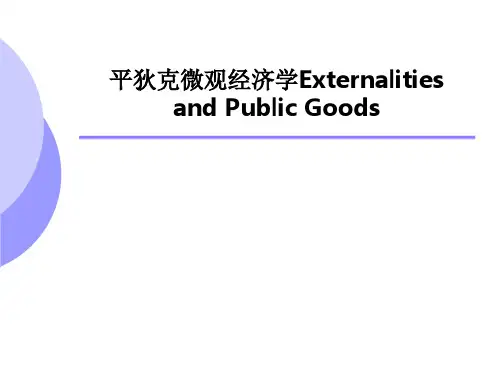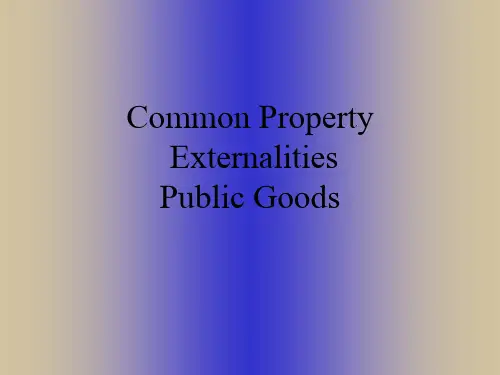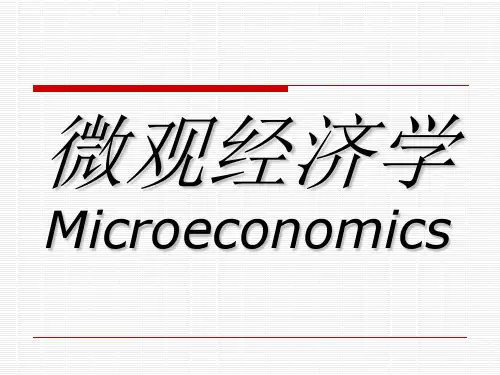- 1、下载文档前请自行甄别文档内容的完整性,平台不提供额外的编辑、内容补充、找答案等附加服务。
- 2、"仅部分预览"的文档,不可在线预览部分如存在完整性等问题,可反馈申请退款(可完整预览的文档不适用该条件!)。
- 3、如文档侵犯您的权益,请联系客服反馈,我们会尽快为您处理(人工客服工作时间:9:00-18:30)。
In a centrally planned economy, prices are set by the government. In a market economy, prices are determined by the interactions of consumers, workers, and firms. These interactions occur in markets—collections of buyers and sellers that together determine the price of a good.
In markets that are not perfectly competitive, different firms might charge different prices for the same product. This might happen because one firm is trying to win customers from its competitors, or because customers have brand loyalties that allow some firms to charge higher prices than others. The market prices of most goods will fluctuate over time, and for many goods the fluctuations can be rapid. This is particularly true for goods sold in competitive markets.
Copyright © 2013 Pearson Education, Inc. • Microeconomics • Pindyck/Rubinfeld, 8e.
2 of 18
1.1 The Themes of Microeconomics
Trade-Offs
CONSUMERS
Consumers have limited incomes, which can be spent on a wide variety of goods and services, or saved for the future.
Copyright © 2013 Pearson Education, Inc. • Microeconomics • Pindyck/Rubinfeld, 8e.
5 of 18
1.2 What Is a Market?
● market Collection of buyers and sellers that, through their actual or potential interactions, determine the price of a product or set of products.
• Market definition can be important for public policy decisions.
Copyright © 2013 Pearson Education, Inc. • Microeconomics • Pindyck/Rubinfeld, 8e.
9 of 18
Copyright © 2013 Pearson Education, Inc. • Microeconomics • Pindyck/Rubinfeld, 8e.
6 of 18
Competitive versus Noncompetitive Markets
● perfectly competitive market Market with many buyers and sellers, so that no single buyer or seller has a significant impact on price. Many other markets are competitive enough to be treated as if they were perfectly competitive. Other markets containing a small number of producers may still be treated as competitive for purposes of analysis. Finally, some markets contain many producers but are noncompetitive; that is, individual firms can jointly affect the price.
Copyright © 2013 Pearson Education, Inc. • Microeconomics • Pindyck/Rubinfeld, 8e.
4 of 18
Theories and Models
In economics, explanation and prediction are based on theories. Theories are developed to explain observed phenomena in terms of a set of basic rules and assumptions. A model is a mathematical representation, based on economic theory, of a firm, a market, or some other entity.
Market definition is important for two reasons:
• A company must understand who its actual and potential competitors are for
the various products that it sells or might sell in the future.
WORKERS Workers also face constraints and make trade-offs. First, people must decide whether and when to enter the workforce. Second, workers face trade-offs in their choice of employment. Finally, workers must sometimes decide how many hours per week they wish to work, thereby trading off labor for leisure. FIRMS Firms also face limits in terms of the kinds of products that they can produce, and the resources available to produce them.
● macroeconomics Branch of economics that deals with aggregate economic variables, such as the level and growth rate of national output, interest rates, unemployment, and inflation.
Copyright © 2013 Pearson Education, Inc. • Microeconomics • Pindyck/Rubinfeld, 8e. 3 of 18
Prices and Markets
Microeconomics describes how prices are determined.
Copyright © 2013 Pearson Education, Inc. • Microeconomics • Pindyck/Rubinfeld, 8e.
7 of 18
Market Price
● market price
Price prevailing in a competitive market.
CHAPTER
1
CHAPTER OUTLINE
1.1 1.2 1.3 1.4 The Themes of Microeconomics What Is a Market? Real versus Nominal Prices Why Study Microeconomics?
Preliminaries
EXAMPLE 1.1
THE MARKET FOR SWEETENERS
In 1990, the Archer-Daniels-Midland Company (ADM) acquired the Clinton Corn Processing Company (CCP). The U.S. Department of Justice (DOJ) challenged the acquisition on the grounds that it would lead to a dominant producer of corn syrup with the power to push prices above competitive levels. ADM fought the DOJ decision, and the case went to court. The basic issue was whether corn syrup represented a distinct market. ADM argued that sugar and corn syrup should be considered part of the same market because they are used interchangeably to sweeten a vast array of food products.
